Greece and the Black Sea
September 9 through September 30, 2013
After a week in Greece, we went to the port of Pireaus to board Oceania Cruise Line's MS Nautica, starting the next leg of our trip. | |
| Arriving
for our embarkation, we found Pireaus shrouded by rain, and this was
the view from one of the upper decks of the ms Nautica. | |
| There are some shadows here, but no sun. Remember that rain? It was keeping most people inside, neither tanning nor swimming. | 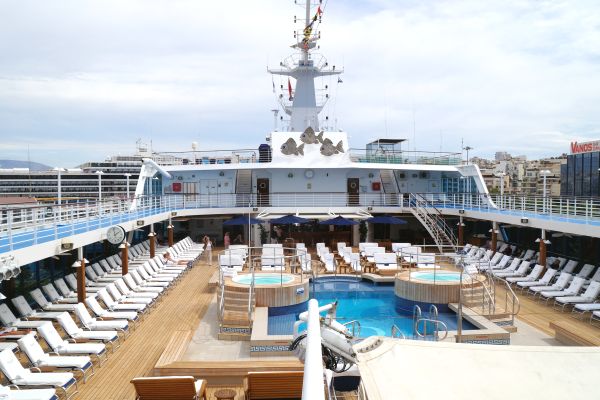 |
| By the time we reached Mykonos, the weather had switched to magnificent, but we had to anchor and tender to visit the island. (In case there was a question, ms Nautica is the big one.) | 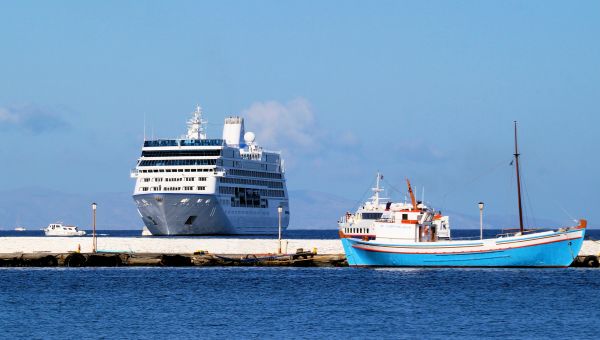 |
| Ano Mera is a village, second only to Mykonos on the island, but its drawing card is the Monastery of Panagia Tourliani. This monastery dates to 1542, which is pretty recent on a Greek calendar. | 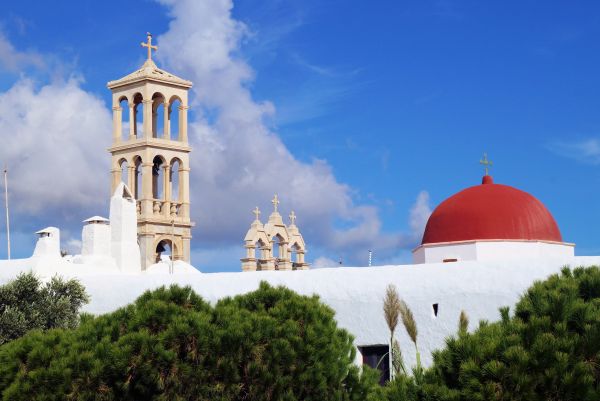 |
| The chapel of Panagia Tourliani is tiny, but ornate. The iconostasis was actually done by Florentine artists in about 1775. | 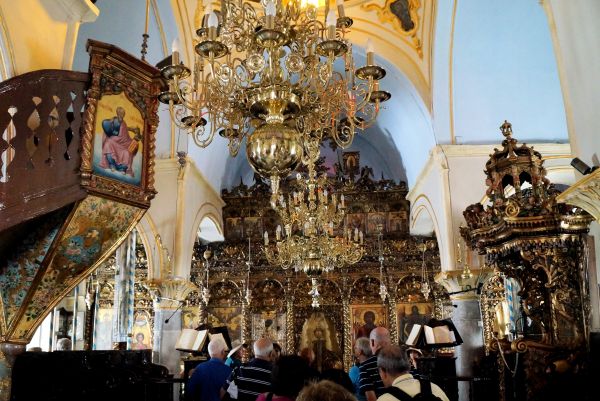 |
| Wherever there is a tower in an Greek or Russian Orthodox church, it is decorated with either Christ or a saint. Where there are multiple towers, the dominant one features Christ. This example is still within the chapel of the Monastery of Panagia Tourliani. | 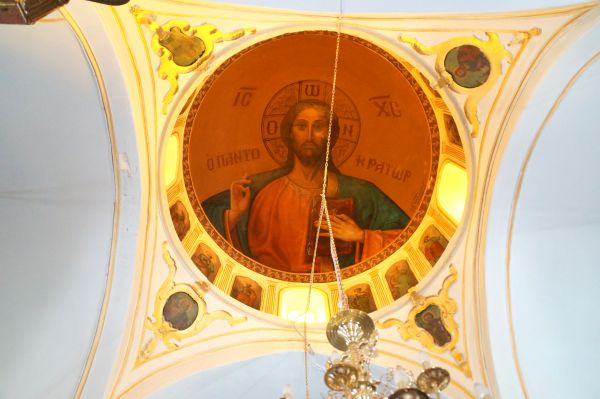 |
| The village of Mykonos meets the Aegean Sea, and on one edge of that village is a region they call Little Venice because of the way the homes meet the sea. The colors are all Mykonos; you don't find this blue and white in Venice. | 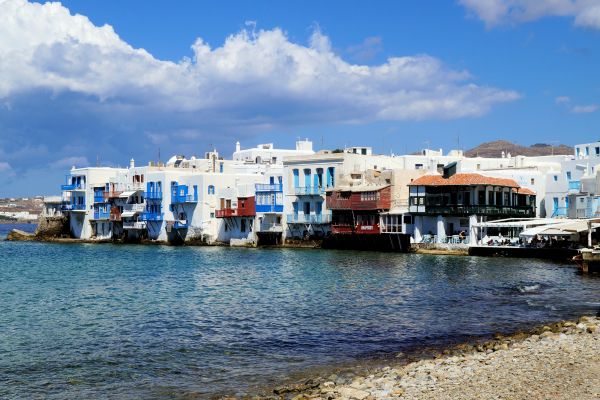 |
| The windmills have become the symbol of Mykonos. but they too are new, having been built by the Venetians in the 16th century. They were used for milling wheat up until about 1950. That provided a great source of income for the island. I guess tourism has become the present source of income. | 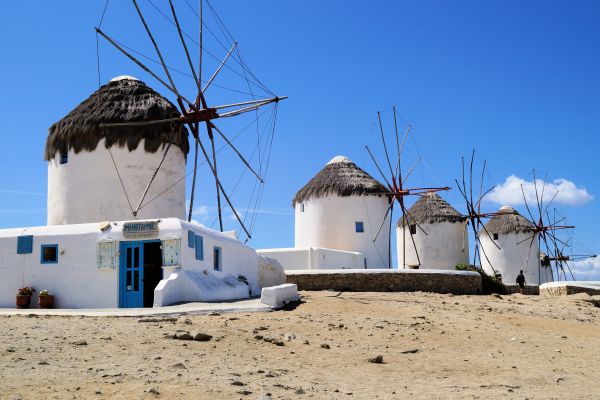 |
| The next stop was Turkey. The port of Kusadasi is a popular cruise destination because it is the gateway to Ephesus, clearly one of the most impressive and satisfying of all the Greek ruins. (We visited in 2002, and you can take a look at our record.) Across our bow, you can see Pigeon Island. Actually Kusadasi is more or less "Bird Island" in Turkish. | 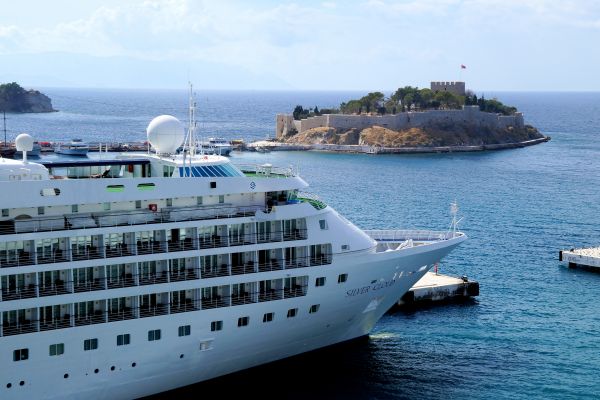 |
| At popular ports like Kusadasi, we found our Nautica dwarfed by the bigger ships. Here the Royal Caribbean Navigator of the Seas looms over our ship. The Navigator of the Seas carries over 3600 passengers, more than 5 times our 684. | 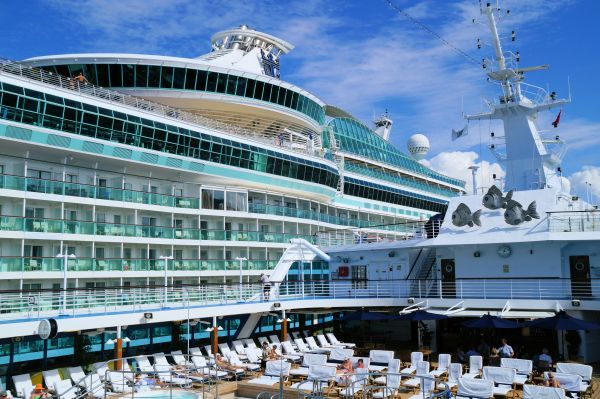 |
| Having
been to Ephesus, we elected to take a different tour, and our first
stop was the ruins of Miletus. This was a very important city
prior to the Persian invasion of the 6th century BC, and it was at its
peak around 320 BC, extending into Roman times. This theater
dates to early in that period. Also, note the group below us. This was as close as we got to a crowd on this tour. Clearly a far cry from the mobs in Ephesus. | 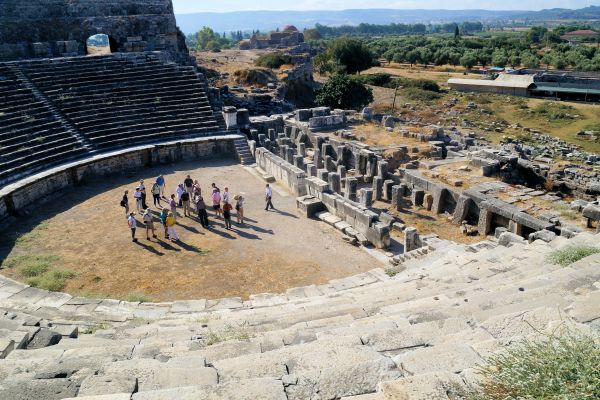 |
| The theater is threaded through with corridors so patrons can get in and out of their seats anywhere in the house. | 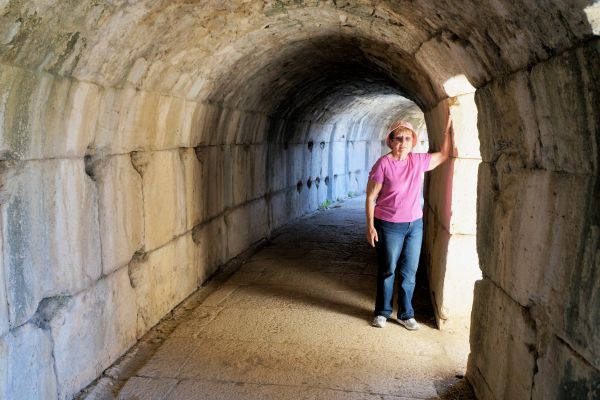 |
| The Baths of Faustina, clearly Roman,
date to 164 AD while the city was still a very important site.
Like Ephesus, this town was on the Meander River, and it was an
important seaport. However, the Meander silted up, isolating
Ephesus and then Miletus from ship traffic around the 6th century AD.
It was all downhill from there. | 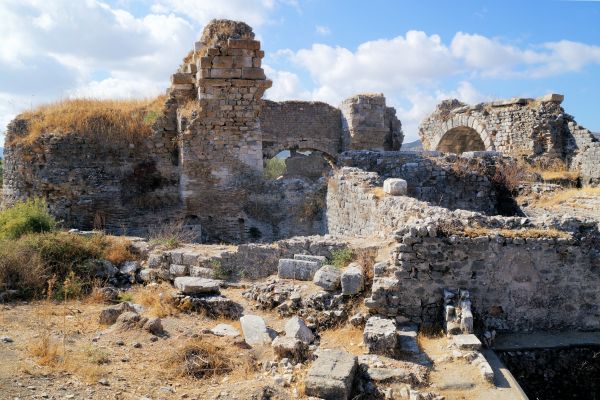 |
| The other stop on our less traveled tour was the village of Didyma, which was the religious region of the city of Miletus. The Temple of Apollo here housed an oracle that was second only to the Oracle of Delphi. | 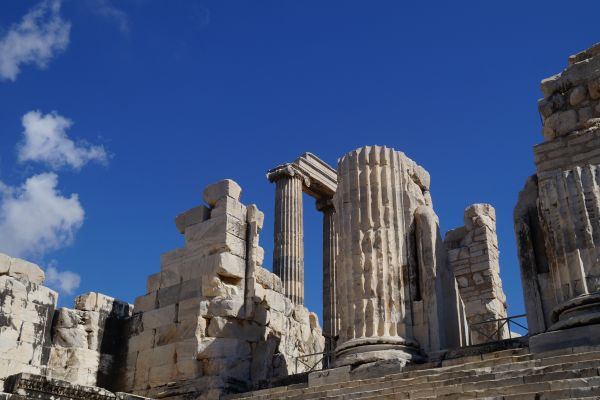 |
| This temple was a great visit because it was in good shape, totally accessible and free of crowds. At this point, we are looking away from the altar of Apollo. | 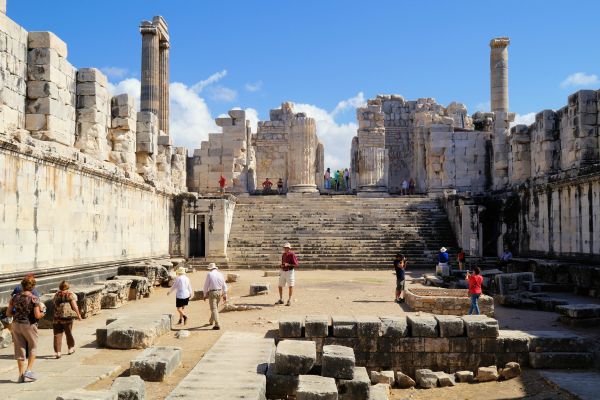 |
| This part of the world is subject to earthquakes, and that is not a good environment for these un-reinforced columns. | 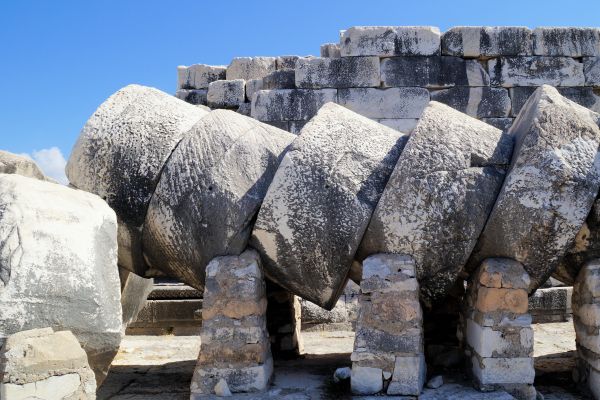 |
| Our principal exposure to Istanbul was a cruise through the Bosporus, a very busy waterway connecting the Sea of Marmara with the Black Sea. Once known as Byzantium, then known as Constantinople, when Attaturk formed the modern nation of Turkey, it became officially Istanbul. There is an ancient Islamic feel to some areas. | 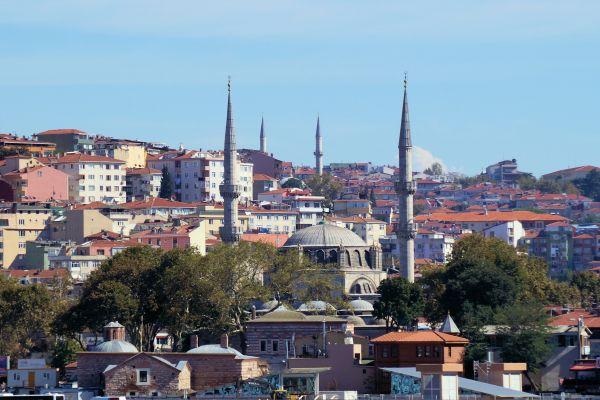 |
| Since it represents 25% of Turkey's economy, the modern Istanbul resembles any number of Western economic centers. Of course, Istanbul, with its 14 million people, is partially in Europe and partially in Asia. | 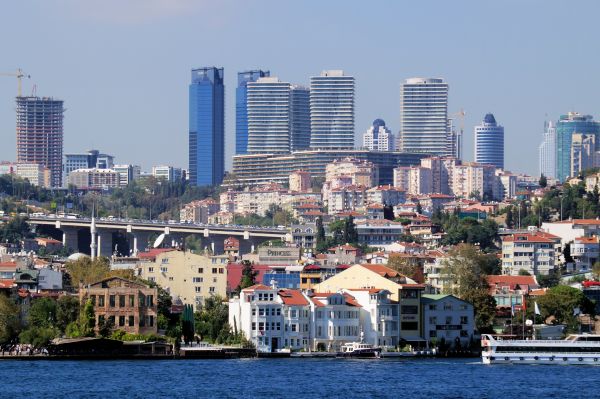 |
| When it was completed in 1973, the Bosporus Bridge joined European Istanbul with Asian Istanbul with a span of 5,118 feet. In 1988, it was joined by the Fatih Sultan Mehmet bridge, and a third suspension bridge is under construction, with an expected completion date of 2015, to the distress of the Turkish environmentalists. | 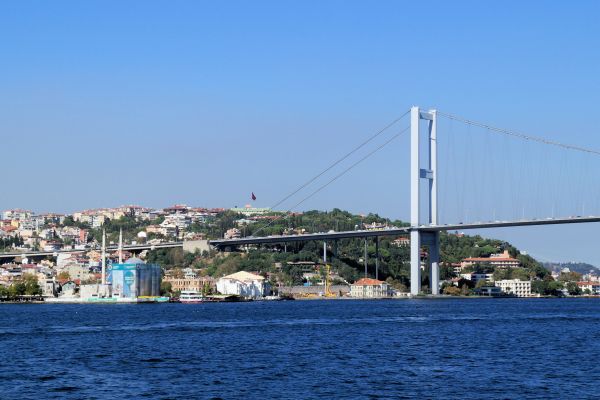 |
| Up until 1453, Constantinople was a Byzantine city, still ruled by emperors calling themselves Constantine. The Ottomans had tried to take the city several times, to not avail, so the Sultan Mehmed II built this castle, the Rumelian Castle, at the narrowest point of the Bosporus, north of Istanbul. His goal was to prevent the city's rescue from the Black Sea. That goal was achieved, and Istanbul fell to the Ottomans in May, 1453, basically ending the Roman Empire after roughly 1500 years. | 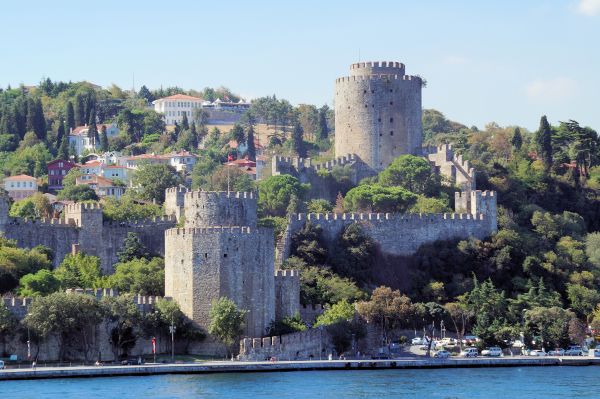 |
| Busy waterways always require transiting ships to have pilots, and this is one of the most colorful pilot boats we saw. The construction in the background will be the third bridge across the Bosporus. | 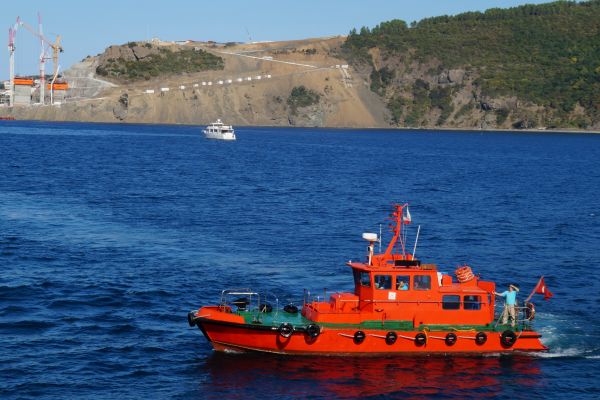 |
| This is a view of the port of Sinop, at one time "the safest port on th Black Sea." In fact this was a port used by the Hittites, Bronze age inhabitants of Turkey, prior to 1100 BC. In the 7th C BC, Miletus chartered this as their port on the Black Sea. Diogenes was born here while it was a Greek city. Then the Romans used it as a port. As a Turkish port, it was the site of the Russian's sinking of an Ottoman frigate squadron in 1853, which brought Britain and France into the Crimean War. | 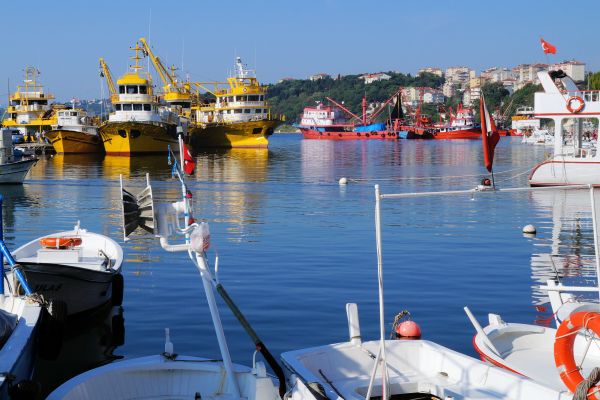 |
| This
minaret marks the Alaaddin Mosque, built by a Seljuk, Alaaddin
Keybudad, between 1220 and 1237 AD. That makes in modern for this
neighborhood. | 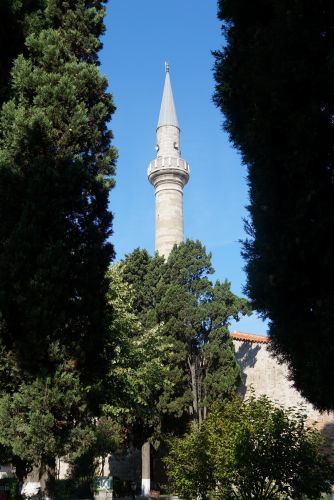 |
| The mihrab, shown here, shows the direction of Mecca, and the imam leads
prayers five times a day from the minbar on the right. This was a
beautiful and serene place. | 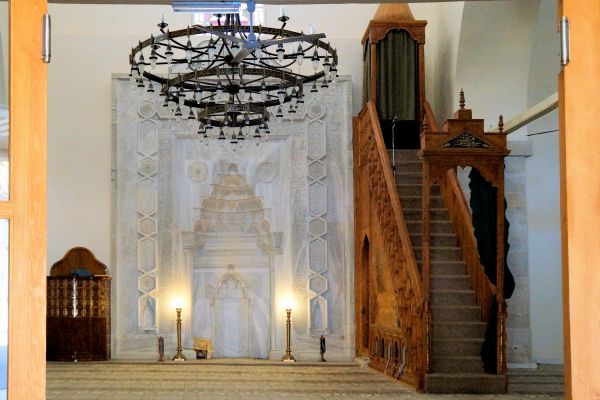 |
| The
Martyrs' Monument is a memorial to the soldiers and sailors who died
when the Russians attacked Sinop and its port in 1853. This was a
successful surprise attack. | 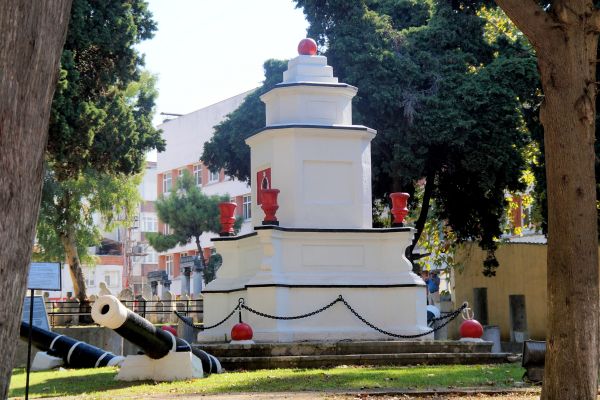 |
| Trabzon, north of Anatolia, is another Black Sea port founded by city of Miletus. This church Hagia Sophia was originally a Byzantine church, built sometime between 1238 and 1263 AD. There was once a monastery adjacent to this building. After Mehmed II (same guy who conquered Constantinople) took this city in 1461, the church was turned into a mosque. | 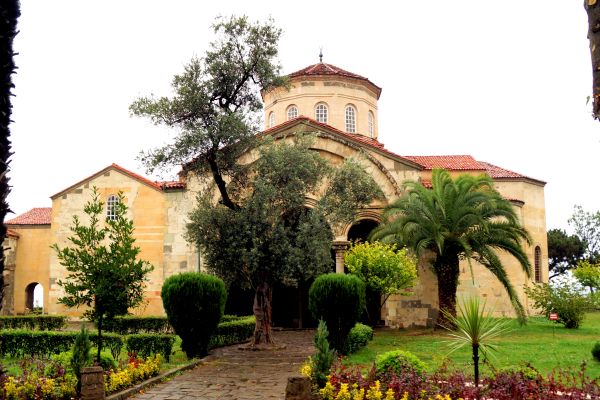 |
| As a Byzantine church, Hagia Sophia was decorated with frescoes. Since Islam forbids human images, they were covered over by whitewash when the building became a mosque. Between 1958 and 1964, the frescoes were rediscovered, and Hagia Sophia became a museum. By the time we visited in 2013, population pressures had returned part of the building to service as a mosque. | 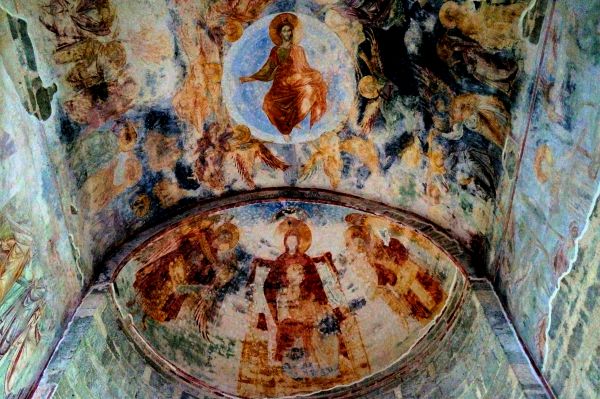 |
| The dome of the Gulbahar Hatun Mosque, built by Sultan Selim the Grim in honor of his mother, shows the contrast between the Islamic and Byzantine treatments of a dome. | 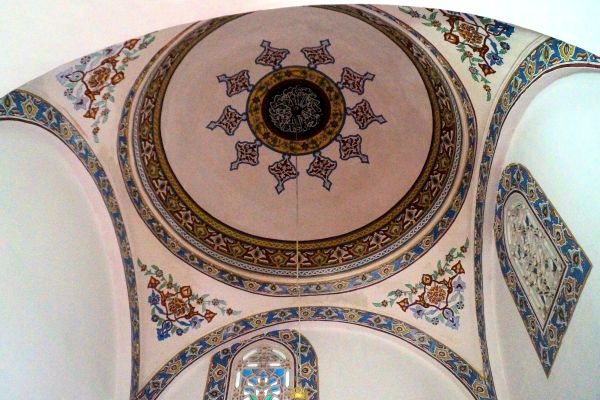 |
| Looking upward in the main hall of the Gulbahar Hatun Mosque, showing the top of the mihrab and the minbar. The locals regard this as the most beautiful mosque in the area. | 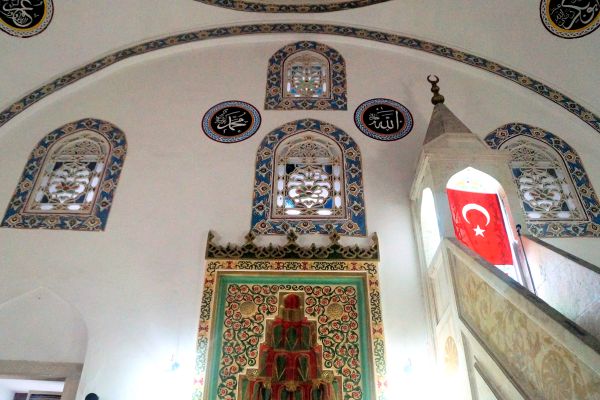 |
| This statue of Mustafa Kemal Attaturk overlooks Attaturk Square in the heart of Trabzon. Attaturk is Turkey's George Washington, but he was far more of a dictator. One of the things that impressed me was Attaturk's demanding the replacement of Arabic with a strictly phonetic Latin alphabet, configured with 29 characters to map spoken Turkish; literacy rose from 9% to 33% in just 10 years. | 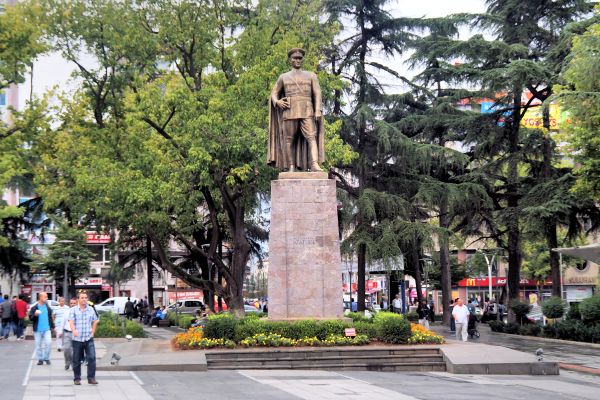 |
| This is known as the Attaturk Kiosk. It was originally a summer house belonging to Kapagiannidis, a wealthy Greek, but in 1917 it was "nationalized." Attaturk stayed here in 1924 and also in 1937, when he was suffering from the illness that killed him the next year. | 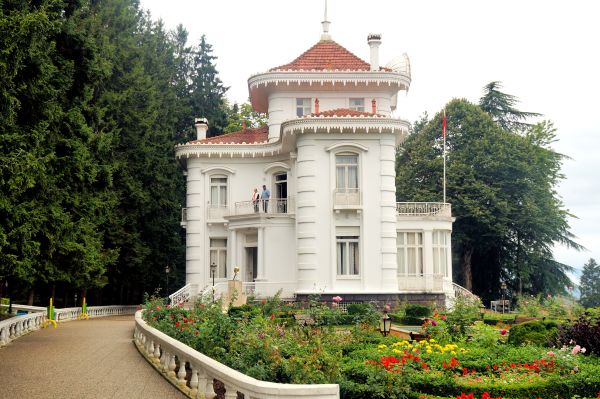 |
| Our next stop was to be Sochi, but preparations for the 2014 Winter Olympics had taken their cruise port out of service, and heavy winds made anchoring and tendering to visit the city too dangerous. So instead of pictures of Stalin's Sochi dacha, I give you ms Nautica, shown here docked in Sinop. | 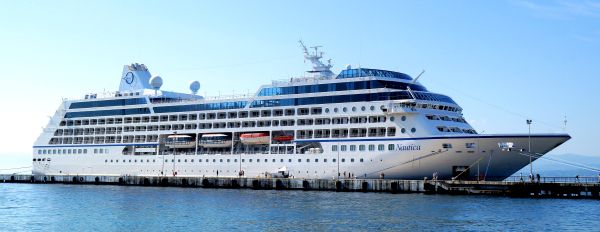 |
| Our digs were in Stateroom 4007. The window here is the fourth small square window back from the bow in the image above. | 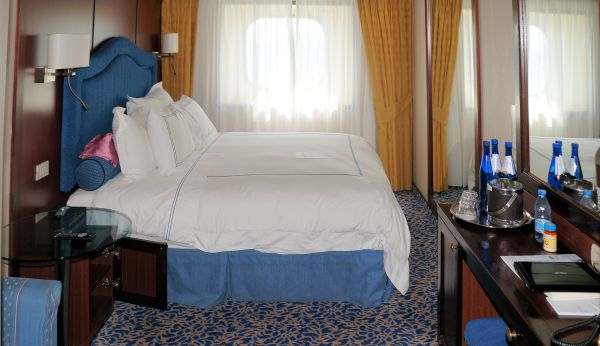 |
| This was the lounge on our deck. The decoration was very traditional, but the environment on Nautica was not. Open seating for all meals, and no formal nights. All in all, a very relaxed atmosphere. | 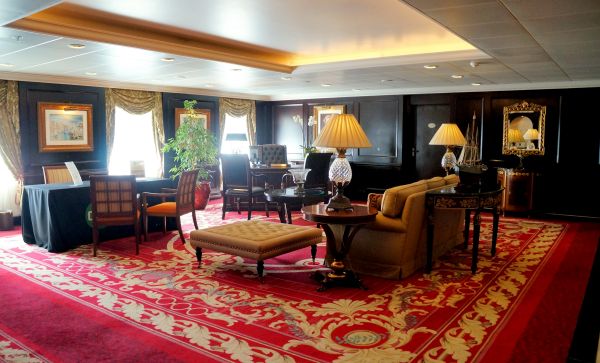 |
| In keeping with the traditional decor, ms Nautilus has a Grand Staircase. However in a ship this size, grandeur comes in a compact edition. | 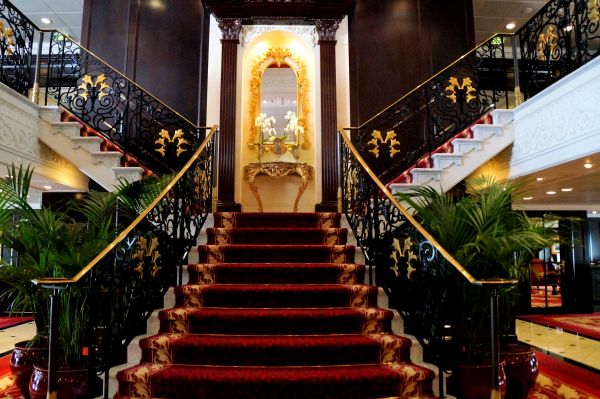 |